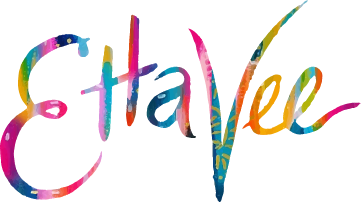3 Things You Need to Know About Art Licensing!
Hello friends!
Words cannot describe how thrilled I am to share about the world of art licensing! It’s something i’m asked about daily from artists around the world. I began licensing my artwork onto products in 2016 and have learned SO much over the past few years. I want to introduce more artist to the business-side of art. I hope that by sharing my journey and knowledge, it will to give other artists clarity, knowledge & confidence so that they too can enter in the world of art licensing, elevate their brands and earn passive income (OH YESSS)!
Last week, I asked my Instagram community to send me their art licensing questions and got an overwhelming response of questions. The first batch of questions i’m going to tackle will help explain the basics of art licensing. I received many questions where artists wanted to know what art licensing is, if they’re ready to license and if it’s right for them! I figured it’s best to start with the basics!
Question 1: What is Art Licensing?
Art Licensing is first and foremost… a business! The term License, in this sense, means: to authorize the use of your artwork. In this post i’ll be talking about product-based art licensing.
How it works is a company, usually a manufacturer, will reach out to an artist about licensing their artwork to use on their products. These manufacturers then take the artwork and pay to have the products mass produced. The manufacturer will then distribute these products to retailers who sell the products, featuring the licensed artwork, to their customers.
Here are some examples of the products that I’ve created through my brand, EttaVee via art licensing.
EttaVee x Olivia Hassler Korea
EttaVee x Lang Artwork
EttaVee x Rollie
EttaVee x iCanvas
Question 2: How is an artist paid?
Based on how the initial contract between the artist and manufacturer is set up, the artist receives a percentage (commission) of each sale based on the price of the item and quantity produced. Payments typically take a long time due to the long production cycle of the products. In my experience, it takes about a full year to develop a product collection and get it onto store shelves, which is a long time to wait when you have rent to pay! The artist would then to wait for that product to start selling in order to start earning royalties. This is why it’s desirable to have a royalty advance.
Royalty Advance - A royalty advance, also known simply as an Advance, is when the manufacturer agrees to pay the artist some of their royalties in advance. This can be anywhere from hundreds to thousands of dollars, based on the product, your brand, the percentage etc. Receiving advances are amazing because the artist receives payment upon signing the contract and can begin work and focus better on their licensing projects and not be stressed about waiting a year for payment.
Flat Fee - Sometimes companies prefer to pay the artist a flat fee for use of their artwork. This is a one time payment upon signing the contract that permits the licensee. The good thing about a flat fee is that you receive the payment right away. The downside, is that even if the product is successful and sells well, you will not receive any additional payment/ royalties on the current contract.
Question 3: How do I know if art licensing is right for me?
Here are a few pros and cons that come to mind when thinking of art licensing!
Pros
Art licensing generates passive income! Depending on how your contract set up, you can earn royalties off of one piece of licensed artwork for years, decades even!
Art licensing allows you to present your work on the world stage. This raises awareness for your art and brand!
Develop some great relationships with those in the industry.
Cons
It can take a while before you start seeing great financial return. You will need to secure MANY different contracts to be able to earn a living wage off of just art licensing alone. This is why many artist have many different revenue streams at once.
Though art licensing creates passive income once out into the world, some projects do require a lot of attention during the developmental stage. I personally love the developmental phase, but it’s important to know that extra work is sometimes required!
Requires some financial investment such as tradeshows and design software.
Join me on this journey?
I hope this post helped shine some light on the basics of what art licensing is! If you feel that this is something you’d like to explore for your business then be sure to check back for more posts coming your way!! We all have something unique to offer the world through what we are expressing in our artwork. There IS room for you, if you’re ready to do the work!
I’d If you have any questions, please don’t hesitate to ask in the comments below!
xo,
Jessi








